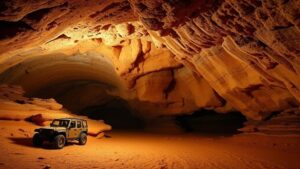How climate change uncovers long-lost archeological sites in polar regions.
How Climate Change Uncovers Long-Lost Archaeological Sites in Polar Regions
Climate change is reshaping the planet in various ways, and one of its less publicized effects is the uncovering of long-lost archaeological sites in the polar regions. As glaciers and ice sheets recede, they reveal remnants of human activity that have been hidden for centuries, offering invaluable insights into ancient civilizations and their adaptation to extreme environments.
The Thawing Landscape of the Arctic
The Arctic region is undergoing a significant transformation due to climate change, with temperatures increasing at nearly twice the global average. According to the National Oceanic and Atmospheric Administration (NOAA), average temperatures in the Arctic have risen by about 3 degrees Fahrenheit (1.6 degrees Celsius) since the 1970s. Such warming results in the melting of permafrost, opening a window into the past.
- In 2019, a large portion of the Greenland ice sheet melted, leading to the discovery of ancient artifacts and remains.
- Expeditions in Siberia have uncovered well-preserved mammoth remains as well as tools and remnants of human settlements.
Significant Discoveries
The uncovering of archaeological sites in the polar regions has led to discoveries that drastically alter our understanding of early human life. For example, in 2018, researchers found a 1,000-year-old Inuit village in Alaska’s National Park Service lands. The community thrived in harsh conditions, and its remnants provide insights into their daily lives, hunting practices, and social structures.
- In 2019, melting permafrost in the Siberian tundra revealed a 15,000-year-old hunting site used by ancient humans.
- In Greenland, melting ice is allowing scientists to study artifacts from the Norse settlers who arrived around 1000 AD.
Archaeological Significance
These archaeological sites are not merely of historical interest; they hold critical information about climate resilience and adaptation strategies. By studying how ancient populations coped with environmental changes, modern societies can better prepare for future challenges related to climate change.
For example, the discovery of ancient fishing tools in the Arctic can inform current practices on sustainable fishing as ecosystems evolve. Also, the methods of housing and resource management utilized by these early communities can provide models for contemporary living in extreme conditions.
Challenges and Concerns
While the uncovering of these sites presents unique opportunities, it also poses significant challenges. The rapid pace of climate change means that vital archaeological artifacts may be lost before they can be documented. Plus, the disturbance of long-buried sites can result in damage from natural erosion or human activities, including tourism and commercial exploitation.
- In 2020, researchers expressed concern that many sites exposed too quickly for proper study.
- The potential for looting increases as sites become more accessible.
Global Implications
The insights gained from these polar archaeological discoveries have ramifications beyond regional history. They contribute to a global narrative about humanitys resilience in the face of environmental change. For example, the challenges faced by ancient Arctic inhabitants mirror those experienced by modern communities now confronting the threats posed by climate change.
The study of these sites can foster a deeper understanding of human history, resilience, and adaptation strategies that might inform current policy-making. Such efforts could help societies mitigate adverse effects resulting from ongoing climate fluctuations.
Actionable Takeaways
To wrap up, while climate change poses significant risks to our planet and its inhabitants, the uncovering of archaeological sites in polar regions provides an unprecedented opportunity for discovery and learning. To capitalize on this potential, stakeholders must:
- Prioritize the documentation and preservation of newly discovered sites.
- Foster interdisciplinary collaborations between archaeologists, climatologists, and policymakers.
- Increase public awareness and engagement in preserving our shared cultural heritage.
As climate change continues to alter landscapes worldwide, the lessons learned from the past could be crucial for charting sustainable paths for the future.



